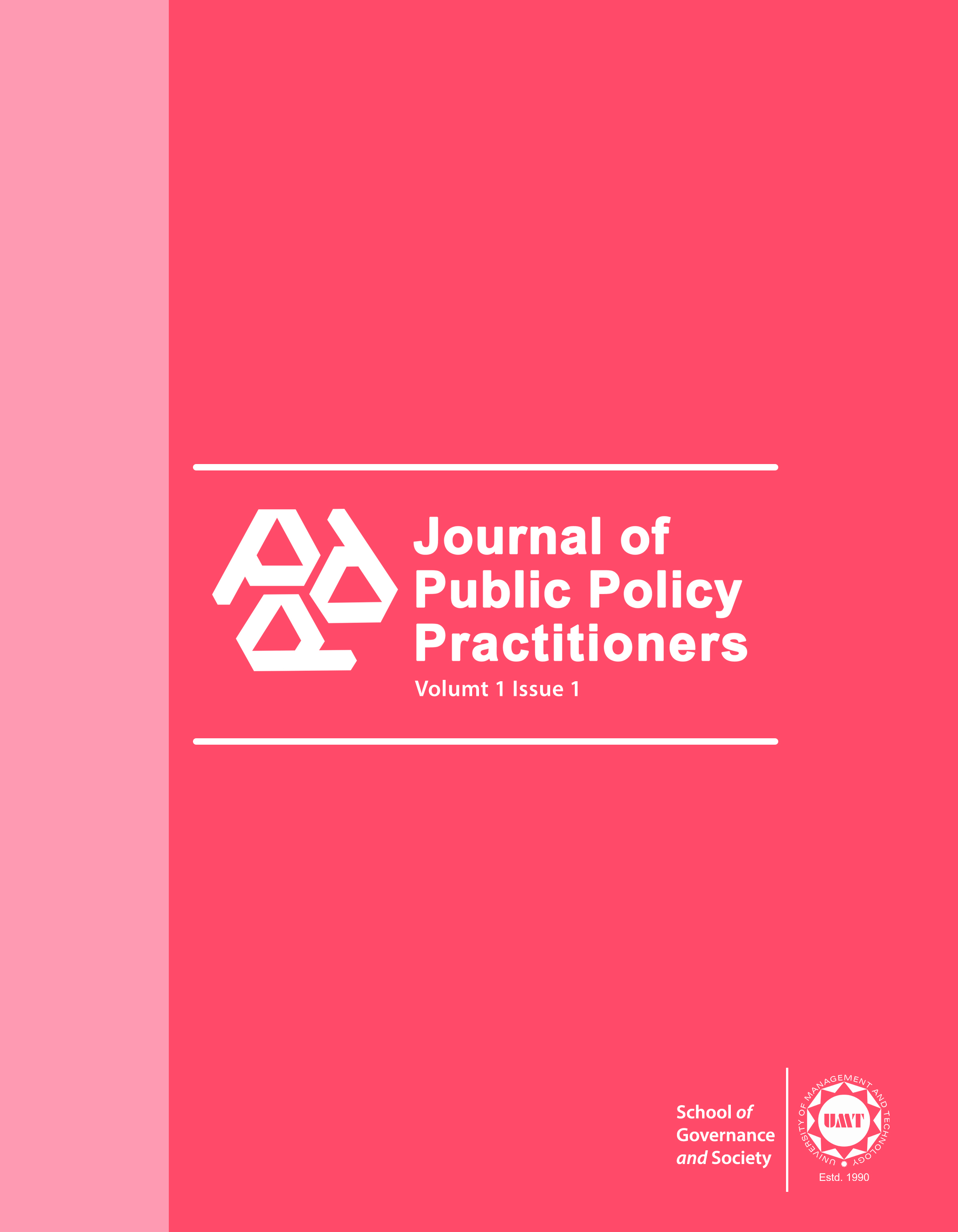Rising Trends of Street Crime in Punjab
Abstract
 Abstract Views: 21
Abstract Views: 21
Crime is not a result of any single act that is why crime prevention cannot be left alone to only one department. All crimes have certain socio-economic and psychological consequences, however, amongst them crime against property has serious consequences for citizen’s safety and economic activity in any society. Street crimes, which constitute major portion of crime against property has consistently increased in the province of Punjab in the last few years. Street crime prevention is of great concern for the policymakers in general and police department in particular. The gathered crime data in Punjab signified that there is a sharp increase in the street
crimes in the province, however, police department still lack both resources and capacity to detect and investigate these street crimes. As street crime has evolved over a period of time where offenders use modern communication tools and resort to violence, the state response has been found lacking. Various public policy initiatives against street crime in Punjab are mostly designed to control street crimes rather than its prevention. The focus of these initiatives has remained on prevention through policing measures and increasing deterrence against crime. Despite all the challenges posed by street crime, some of the countries have successfully
implemented strategies for the prevention of street crimes. They have adopted a whole-of-system approach and handled the issue of street crimes not only from criminological perspective but also as a social phenomenon. Various strategies adopted by developed countries signify the importance of addressing various social factors contributing to rising trends of street crimes in urban centers. These initiatives not only increased the cost of committing crime for the offenders but also worked on creating conditions where criminal offenders find it less lucrative to commit crime. Punjab has invested hugely in technological support for the police departments in Lahore but there is a dire need to replicate this model in all city district governments by addressing other social determinants of street crimes.
Downloads
References
Anwar, A., Anwar, S., & Syed, S. H. (2021). Profiling crime in Pakistan: An aggregated and disaggregated socioeconomic analysis. Forman Journal of Economic Studies, 17(1), 77–97. https://doi.org/10.32368/FJES.20211704
Arvanites, T. M., & Defina, R. H. (2006). Business cycles and street crime. Criminology, 44(1), 139–164. https://doi.org/10.1111/j.1745-9125.2006.00045.x
Cantor, D., & Land, K. C. (1985). Unemployment and crime rates in the post-World War II United States: A theoretical and empirical analysis. American Sociological Review, 50(3), 317–332. https://doi.org/10.2307/2095542
Cheema, A., Hameed, Z., & Naseer, M. F. (2017). Safeguarding Pakistanis: Punjab’s crime problem, its pathology and priority for action. Institute of Development and Economic Alternatives. https://ideaspak.org/images/Publications/Governance-Institutions/Safeguarding-Pakistanis-Punjab-Police-Crime-Urbanization-Working-Paper.pdf
Criminal Justice Inspectorate the UK. (2003). Streets ahead: A joint inspection of the street crime initiative. Home Office Communication Directorate. https://www.justiceinspectorates.gov.uk/cjji/wp-content/uploads/sites/2/2014/04/StreetsAheadReportJul03.pdf
Farrington, D. P., MacKenzie, D. L., Sherman, L. W., & Welsh, B. C. (2002). Evidence-based crime prevention. Routledge. https://doi.org/10.4324/9780203166697
Hallsworth, S. (2005). Street crime. Willan. https://doi.org/10.4324/9781843926788
Hayward, K. (2007). Situational crime prevention and its discontents: Rational choice theory versus the ‘culture of now’. Social Policy & Administration, 41(3), 232–250. https://doi.org/10.1111/j.1467-9515.2007.00550.x
IHS Markit. (n.d.). The benefits of safe cities: Safe cities creating a better life. https://cdn.ihs.com/www/Technology/Security/IHS_Markit-Benefits_of_Safe_Cities_WhitePaper.pdf
Jabbar, S. M., & Mohsin, H. M. (2013). Economics of property crime rate in Punjab. The Pakistan Development Review, 52(3), 221–233.
Khan, I. (2022, January 29). SSP investigation Lahore Imran Kishwar's statement regarding PUBG game impacts on society [Video]. YouTube https://www.youtube.com/watch?v=kXMyryCnhlU
Khan, N., Ahmed, J., Nawaz, M., & Zaman, K. (2015). The socio-economic determinants of crime in Pakistan: New evidence on an old debate. Arab Economic and Business Journal, 10(2), 73–81. http://dx.doi.org/10.1016/j.aebj.2015.01.001
Kizilgol, O., & Selim, S. (2017). Socio-economic and demographic determinants of crime by panel count data analysis: The case of EU 28 and Turkey. Journal of Business Economics and Finance, 6(1), 31–41. https://doi.org/10.17261/Pressacademia.2017.383
Machin, S., & Marie, O. (2011). Crime and police resources: The street crime initiative. Journal of the European Economic Association, 9(4), 678–701. https://doi.org/10.1111/j.1542-4774.2011.01018.x
Mahmood, M. (2021, December 22). CPO Faisalabad Ghulam Mubashar visit's police station Mamukanjan [Video]. YouTube. https://www.youtube.com/watch?v=2Rg27urlCJw
Pakistan Bureau of Statistics. (n.d.). Province-wise provisional results of census 2017. https://www.pbs.gov.pk/content/final-results-census-2017
Punjab Police. (n.d.). Annual budget. https://punjabpolice.gov.pk/our_budget
Santana, P., Santos, R., Costa, C., Roque, N., & Loureiro, A. (2009). Crime and urban environment: Impact on human health. In City Futures in a Globalising World. An international conference on globalism and urban change. https://www.uc.pt/fluc/gigs/GeoHealthS/doc_apoio/crime_ambienteurbano_santana.pdf
Scheingold, S. A. (2011). The politics of law and order: Street crime and public policy. Quid Pro Books.
Scheingold, S.A. (2010). The Politics of Rights: Lawyers, Public Policy, and Political Change. Ann Arbor: University of Michigan Press.
Scottish Centre for Crime and Justice Research. University of Glasgow. (n.d.). Theories and causes of crime. http://www.sccjr.ac.uk/wp-content/uploads/2016/02/SCCJR-Causes-of-Crime.pdf
Tilley, N., Smith, J., Finer, S., Erol, R., Charles, C., & Dobby, J. (2004). Problem-solving street crime: Practical lessons from the street crime initiative. Research and Statistics Directorate, Home Office. https://www.ojp.gov/ncjrs/virtual-library/abstracts/problem-solving-street-crime-practical-lessons-street-crime
Truntsevsky, Y. V., Lukiny, I. I., Sumachev, A. V., & Kopytova, A. V. (2018). A smart city is a safe city: The current status of street crime and its victim prevention using a digital application. MATEC Web of Conferences, 170, Article e01067.
UN Habitat. United Nations Human Settlement Programme. (2020). World cities report 2020: The value of sustainable urbanization. https://unhabitat.org/sites/default/files/2020/10/wcr_2020_report.pdf
United Nations Office on Drugs and Crime. (n.d.). Crime prevention https://www.unodc.org/unodc/en/justice-and-prison-reform/CrimePrevention.html
Welsh, B. C., & Farrington, D. P. (2012). The Oxford handbook of crime prevention. OUP USA.
Wright, R., & Topalli, V. (2013). Choosing street crime. In F. T. Cullen & P. Wilcox (Eds.), Oxford handbook of criminological theory (pp. 461–474). Oxford University Press.
Copyright (c) 2022 Usman Akram Gondal

This work is licensed under a Creative Commons Attribution 4.0 International License.







